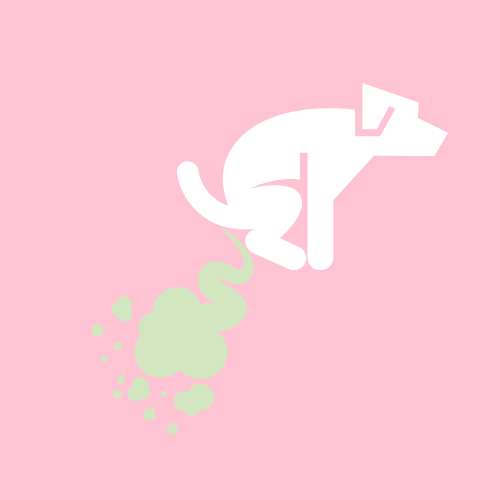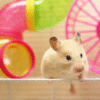It might be uncomfortable to be in close proximity to a pup that is flatulating. A dog’s gaseous scents might be unexpected and unpleasant. If you’ve never stayed with a farting dog, consider yourself lucky. Canine companions are known for their keen sense of smell, so you’d think they’d fart on purpose?
Canine farts are produced by a buildup of gas in the intestines and colon, and the odd fart is typical. Gas may develop in your pup’s digestive tract for various reasons, including the fact that he eats too speedily and may, as a result, swallow air or the possibility that he is consuming the incorrect sorts of food. Bread, beans, the lactose in milk, and specific thickeners included in pet food (typically produced from soya) are all common causes for dogs bringing up their food after eating them. Dogs typically do not fart on purpose.

When Does a Dog Fart Frequently?
The nutrition of your dog is typically the reason when excessive farts occur. It is not necessarily due to an issue with the quality of the components he is eating, but food intolerance is the most likely source of the problem.
When your dog’s body can’t handle a specific component, his digestive system can’t absorb and ‘package’ it properly, causing flatulence. In this case, you will likely also observe that your dog’s feces are slightly more runny than usual.
If you are worried that your pup may have a food intolerance, you should visit your veterinarian immediately. Vets often propose eliminating items from your pet’s food to find the problem. In addition, there are specifically prepared meals that can be beneficial, and your veterinarian will be able to give you with advice on the advantages of using these foods.
- Can Dogs Go On Trampolines [Advice]
- How to Train Your Dog to Ignore Other Dogs? [Complete Guide]
- Why Do My Dogs Lick Each Other’s Private Areas? [Full Explanation]
What Causes Dog Farts?
There are several potential reasons a dog can have an abundance of gas. These are a few frequent causes of dog farts, from nutrition to health.
Your Dog’s Diet
The foods that your canine companion consumes can have a significant impact on how their digestive tract works. The following is a list of the foods that are most commonly associated with dogs having digestive issues due to their diet:
- Change in diet
- Hard-to-digest foods (soy, beans)
- Spoiled food
- High-fat diets
- Dairy-based goods
- Spices
- High-fiber foods
Air Swallowing
Compared to other canines, flatulence is more common in canines that consume an abnormally large volume of air as they eat. Brachycephalic (flat-faced, short-nosed) dogs, gluttons or obsessive eaters, stressed dogs, pups with respiratory disorders, and dogs that have eaten shortly after activity might have an increased prevalence of aerophagia.
Digestive Disease
There is also the possibility that a disease, such as acute or chronic intestinal illness is the root cause of a dog’s excessive farts.
In most cases, additional symptoms, such as nausea and vomiting, are present when gastrointestinal illness is the root cause of the problem. Your pup may also experience a decrease in appetite and a weight reduction.
Inflammatory bowel disease and small intestine bacterial overgrowth are also possible. The cancer of the intestine, known as neoplasia, is another probable cause. Other conditions that induce excessive flatulence include food sensitivities, parasites, a virus-caused inflammation of the gut, and pancreatitis.
Fiber-Containing Foods
Due to lower digestion of fiber and higher fermentation inside the GI tract, diets high in fermentable fiber and inulin, psyllium, oat bran, or pectin may create excessive gas. This is because fiber is fermented more than it is digested.

Food Intolerance
If your dog suffers from environmental allergies, it may develop itchy skin and a dull coat. However, they may have trouble digesting the food if they are allergic to a particular item, like dairy. Indigestion, diarrhea, and gas are some side effects that might result from this. Sometimes it’s hard to know which components your dog is intolerant to; see your doctor if you’re unsure.
Lactose intolerance is frequent in large dogs because they can’t make lactase, which breaks down lactose. Even though your dog likes cheese, cream, and other milk products, too much will cause digestive difficulties and more farts.
What Can I Do to Help My Dog’s Farts?
If you notice that your companion is significantly more gassy than normal, or if their farts are particularly offensive, it may be time to consider making dietary adjustments to your pets.
There are many different sorts of components that may be found in standard pup diets. These foods, which range from wheat to eggs and legumes, include many components, some beneficial while others are not.
Like humans, dogs can develop sensitivities or allergies to particular kinds of food. Lactose-sensitive dogs may be uncomfortable and gassy after eating leftover snacks.
It is of extreme worth that you take the necessary precautions to prevent your pet from obtaining food from the table since this is one of the essential parts you can do. It’s good to give your dog a bite or two of human food every once in a while, but you should ensure that most of the food they consume is safe.
In addition to keeping an eye on any treats made from table scraps, you should also investigate the components of the kibble, whether it is dry or wet, that your pup typically consumes. Your dog may need to try a few foods before finding one he likes.
Taking your dog for a walk is a fantastic approach to help alleviate their farts. If your canine companion is feeling bloated or heavy, exercise can also help reduce any pain that they may be experiencing. If you think your pet’s farts are caused by eating too quickly, you may wish to slow their eating.
A slow feeder dish is one method for slowing your pup’s eating at mealtime. These bowls are made with microscopic holes and blockages intended to slow your dog’s eating process while consuming their food.
Another method is to obtain a bowl two to three times bigger than their present bowl and invert it. Put food in the space around the edge. Your dog will be required to take smaller bites due to this strategy, which imitates the behaviour of slow feeders.

Veterinarian (DVM, MS) Content Writer, Blogger, and WordPress Developer. Working as a pet/animal/bird/fish/reptile/wildlife writer for the past 7 years on many renowned platforms.




